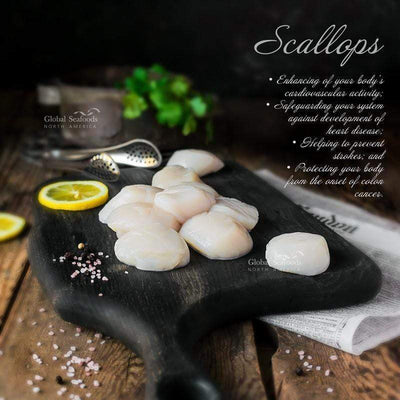The Best Crabbing Techniques for Beginners: Catching Crab Like a Pro

The Best Crabbing Techniques for Beginners
Crabbing is a rewarding activity that combines outdoor adventure with the chance to bring home delicious seafood. Whether you're targeting Dungeness Crab, Golden King Crab, or Snow Crab, the techniques for crabbing are simple enough for beginners but offer plenty of excitement. Learning the right crabbing techniques, choosing the best locations, and understanding the habits of different crab species are essential to maximizing your catch.
In this guide, we’ll explore the most effective crabbing techniques for beginners. We’ll cover everything from setting up crab traps to selecting the best bait, and we’ll even dive into the differences between popular crab species. By the end, you’ll be ready to head out on your first crabbing adventure and come back with a bounty of fresh seafood.
For high-quality crab, visit Global Seafoods to stock up on premium seafood, and don't forget to explore our YouTube channel for more crabbing tips.
1. Why Crabbing is a Great Activity for Beginners
Crabbing is one of the easiest and most accessible ways to enjoy a day on the water, whether you're at the beach, on a pier, or aboard a small boat. It doesn't require expensive equipment, and the learning curve is gentle, making it ideal for those new to fishing or marine activities.
Benefits of Crabbing:
- Easy to Learn: The basic techniques of crabbing are simple and easy for beginners to master.
- Affordable Gear: Crabbing requires minimal equipment, and even the best traps and bait are affordable.
- Rewarding: Not only do you enjoy a day outdoors, but you also get to bring home fresh crab for a delicious meal.
John B. Warden, a marine biologist specializing in crabs, explains, “Crabbing is a great way to connect with nature and understand the marine environment. It's a fun, sustainable activity that anyone can enjoy.”
2. Choosing the Right Crab Species to Target
Before heading out on your crabbing trip, it’s important to know which species of crab are most common in your area and which you should target. Each species has its own habitat preferences and behaviors, which will influence your crabbing technique.
Dungeness Crab:
- Location: Primarily found along the Pacific Coast, from Alaska to California.
- Best Time to Catch: Fall through spring, particularly during the cooler months.
- Crabbing Technique: Traps or pots work best for Dungeness Crabs, as they are larger and more likely to be caught in stationary gear.
- Best Uses: Dungeness Crabs are sweet and tender, perfect for dishes like Cioppino or simply steamed with butter.
You can purchase premium Dungeness Crab at Global Seafoods.
Golden King Crab:
- Location: Found in deep waters in the North Pacific, particularly around Alaska.
- Best Time to Catch: Summer to early fall.
- Crabbing Technique: Due to their depth, King Crabs are typically caught using larger traps from boats.
- Best Uses: With their rich, buttery flavor, Golden King Crabs are perfect for grilling or roasting.
Order Golden King Crab from Global Seafoods.
Snow Crab:
- Location: Found in colder waters, particularly in the Bering Sea and North Atlantic.
- Best Time to Catch: Winter months when they are most active.
- Crabbing Technique: Smaller traps or handlines work well for Snow Crabs, which are often caught in colder, shallow waters.
- Best Uses: Snow Crab meat is delicate and sweet, making it ideal for seafood boils or salads.
For premium Snow Crab Legs, visit Global Seafoods.
3. The Best Crabbing Techniques for Beginners
When it comes to catching crabs, there are several different methods you can use, depending on the location and type of crab you’re targeting. Here are the most effective techniques for beginners:
Using Crab Traps (Pots):
Crab traps, or pots, are the most common method for catching crabs, especially for larger species like Dungeness and King Crab. These traps are designed to sit on the seafloor, allowing crabs to enter but not escape.
How to Use Crab Traps:
- Set the Trap: Choose a trap that suits the type of crab you’re targeting. For larger crabs like Dungeness, opt for a heavier trap that won’t be moved by currents.
- Bait the Trap: Use bait like fish heads, chicken necks, or squid to attract crabs. Place the bait in the center of the trap.
- Drop the Trap: Lower the trap into the water and let it sink to the bottom. For best results, set the trap in areas where crabs are known to gather, such as near rocky outcrops or estuaries.
- Wait: Let the trap sit for 30 minutes to a few hours, depending on how active the crabs are.
- Retrieve the Trap: Pull the trap up carefully, ensuring that it stays upright so the crabs don’t escape.
For more information on trap setups, check out our YouTube guide.
Using Hand Lines:
If you’re crabbing in shallow water or from a pier, a hand line can be a fun and effective way to catch crabs. This method involves attaching bait to a weighted line and slowly pulling it in when crabs take the bait.
How to Use Hand Lines:
- Attach Bait: Tie a piece of bait (such as a chicken neck) to a weighted line.
- Lower the Line: Drop the line into the water and let it rest on the seafloor.
- Wait for a Bite: When a crab starts nibbling at the bait, gently pull the line in, being careful not to scare the crab away.
- Scoop with a Net: As the crab nears the surface, use a net to scoop it up.
Hand lines are best for catching smaller crabs, such as Blue Crabs or Snow Crabs, in shallow areas.
4. Best Bait to Use for Crabbing
Choosing the right bait is key to attracting crabs. Different species prefer different types of bait, but in general, crabs are scavengers and will go for strong-smelling food.
Top Baits for Crabbing:
- Fish Heads: Oily fish heads (such as mackerel or salmon) are excellent for attracting crabs. They have a strong scent that crabs find irresistible.
- Chicken Necks: Chicken necks or drumsticks are a cheap and effective option for baiting crabs.
- Squid: Squid works well, particularly for Dungeness and King Crabs. Its scent spreads quickly through the water, drawing crabs from a distance.
To maximize your catch, try experimenting with different baits and see what works best in your area.
5. Where to Go Crabbing: Best Locations for Beginners
Finding the right location is just as important as using the right gear. Crabs tend to gather in specific habitats, so targeting these areas will increase your chances of success.
Best Places to Go Crabbing:
- Estuaries and Bays: These areas are rich in nutrients and offer sheltered waters where crabs like to feed and hide.
- Rocky Shores: Crabs often hide among rocks and seaweed, making rocky shores an ideal spot to drop traps.
- Piers and Docks: Crabbing from a pier is easy and convenient for beginners. Many piers offer excellent crabbing opportunities, especially in areas where crabs are abundant.
Paul Greenberg, author of Four Fish: The Future of the Last Wild Food, states, “Crabbing is one of the few sustainable fishing practices that can be done from shore, offering access to fresh, local seafood without the need for heavy equipment or a boat.”
6. Best Time to Go Crabbing
Crabbing can be done year-round, but your success rate may vary depending on the time of day, season, and tides.
Best Time of Day:
- Crabs are most active during the early morning and late afternoon, making these the best times to go crabbing.
- Crabs tend to move with the tides, so crabbing during high tide or the incoming tide often yields the best results.
Best Season:
- Dungeness Crab is most abundant in the fall and winter months.
- Golden King Crab season typically runs from late summer to early fall.
- Snow Crab is easiest to catch in the winter when cold-water conditions are optimal.
For premium, sustainably sourced crab, visit Global Seafoods.
FAQs About Crabbing for Beginners
1. What’s the easiest crab species to catch for beginners?
Dungeness Crab is one of the easiest crabs to target, as they are abundant and respond well to traps. Snow Crab is another good option, especially in colder regions.
2. Do I need a license to go crabbing?
In many areas, a fishing or crabbing license is required. Always check local regulations before you head out.
3. How long should I leave a crab trap in the water?
Crab traps can be left in the water for 30 minutes to several hours, depending on the activity level of the crabs.
4. Can I crab at night?
Yes, crabs are often more active at night, making it a good time to set traps.
5. What should I do with undersized crabs?
It’s important to follow local size regulations. If a crab is below the legal size, gently return it to the water to ensure sustainable crabbing.
For more crabbing tips and videos, visit the Global Seafoods YouTube Channel.
Also in News

How to Make Sea Bream Sushi With Dry-Aged Tuna & Crab Roll — Step-by-Step With Chef Joshua
A complete guide to making Sea Bream sushi at home, including filleting, curing, slicing, and building a Dry-Aged Tuna & Crab sushi roll. Chef Joshua shares professional tips for restaurant-quality results.

The Boiled Crab in Popular Culture: From Cajun Cuisine to Trendsetting Restaurant Phenomenon
From spicy Cajun-inspired seafood boils to hands-on dining experiences, The Boiled Crab has left a unique mark on popular culture. Discover its cultural roots and culinary influence.

Boiled Crab for Game Night: Everything You Need for a Perfect Seafood Party
Take your game night to the next level with a Boiled crab party. Learn the best recipes, cooking tips, and hosting hacks for a memorable seafood feast.










